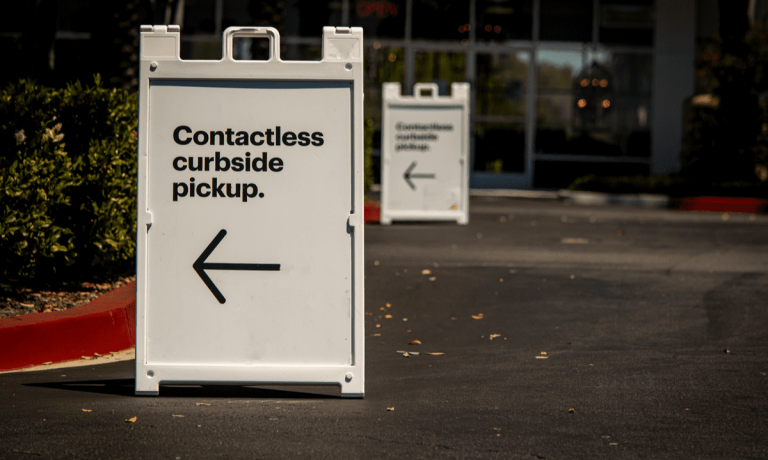
The trend of businesses offering curbside pickup isn’t even a year old yet but the widely embraced COVID-era service solution is already undergoing a makeover.
According to digital location platform provider Radar, although the initial “scrappy” version of curbside pickup has been wildly popular and replicated, it is not without its flaws, including long wait times, ambiguous signage, vague pickup instructions and poorly timed rendezvous plans to connect customers and staff.
Hence the evolution of “Curbside 2.0,” which Radar says will take the popular service to the next level. Its new trip tracking platform gives retailers visibility into when customers will arrive, where they’re coming from and what they’re picking up when they arrive.
“Location challenges are technically kind of difficult to solve,” said Radar COO Coby Berman. “We want to simplify them so that if you are a brick-and-mortar retailer you need to understand that a customer has an active order, and you need to know where they are along their trip, so you can make sure you fulfill the order way the customer expects. Our job is to sort of uncover and power those data points, so the experiences is seamless. There’s a bit of a flip side if you don’t get it right. Just imagine Black Friday without curbside coordination.”
While the initial purpose and intent of curbside pickup was noble, its execution has fallen short, Berman said, to the point where cold meals or coffee are commonplace, and time wasted searching for vehicles and customers is prevalent. However, when merchants add live tracking into their upgraded curbside capabilities, three major headaches disappear.
According to Curbside 2.0 research conducted by Radar, wait times were reduced since employees have live, location-based tracking info that provides an accurate ETA. Merchants are also alerted when a customer is approaching the store — and again when they have actually arrived — regardless of when the scheduled meet time was. It also gives managers of multi-outlet businesses the ability to analyze performance and compare results for training purposes.
“It’s hard to plan for these kinds of issues,” Berman said. “That’s one of the business consequences of COVID. Retailers had a great way to meet the customer, which was at the curbside. But they lacked a piece of technology to manage it. We realized, and retailers have realized, that a lot of these consumer and safety norms are here to stay. You know, even with a vaccine, retailers still need to sequence orders based on where people are.”
The curbside upgrade comes at a time when the coronavirus is raging again at unprecedented levels, prompting regional travel restrictions and closer monitoring and regulation of bars and restaurants. It also comes just as the holiday shopping season is about to kick into high gear, and while roughly two-thirds of the U.S. population is starting to bundle up for winter. Add in the fact that the broad-based digital shift that has transformed the way consumers live, work, shop and eat is showing no signs of slowing down, and the timing for a service refresh seems prescient.
“I think what’s next for us is to just saturate the top 100 retailers and QSRs,” Berman said. “And then we want to take this technology into some rich in-store modes. As contactless payments become table stakes we need to keep thinking about ways that people are going to shop. They’re looking to their phone as a guide and we think location-based services at retail will start to see some investments as the in-store experience, or on-premise dining experience, hopefully comes back soon.”